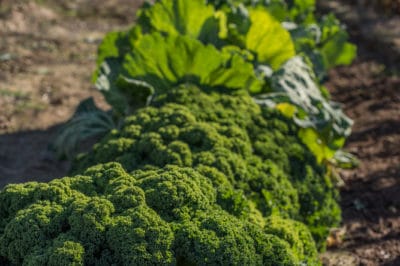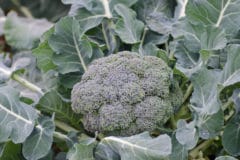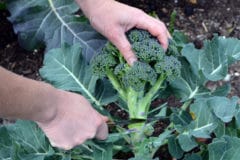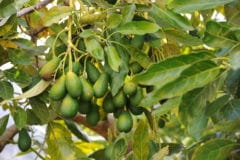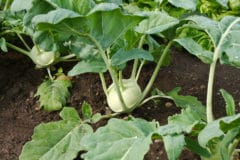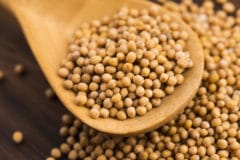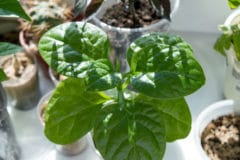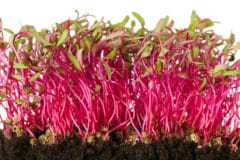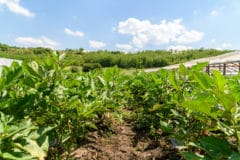Where Broccoli Comes From
Broccoli is a member of the Brassica plant family, also known as cruciferous vegetables, due to the cross-shaped flower form common to these plants. The Brassica family also includes:
- Mustard
- Cauliflower
- Kale
- Brussel sprouts
- Bok choy
- Collards
- Turnips
Early types of broccoli have been grown and eaten in Asia since antiquity, and the plant was eaten, and written about in cookbooks, by the ancient Romans. Old-fashioned cultivars of broccoli arrived in the U.S. during the Colonial period.
These earlier varieties of broccoli were similar to today’s sprouting broccoli cultivars, consisting of slender flower stalks harvested and cooked with clusters of adjacent leaves.
The dense flower-head type of broccoli most commonly found at the grocery store today was first grown commercially in California in the 1920s and became popular after World War II.
Currently, the United States is the world leader in commercially grown broccoli with California, Texas, Oregon, and Arizona producing the largest crops. In other parts of the world, Italy and Asia are among the largest growers and consumers of broccoli.
Climate Conditions for Growing Broccoli
Broccoli and many other cabbage family vegetables thrive in cool, moist conditions when planted in well-drained, rich soil, and full sun. However, depending on the stage of development of the plant, the optimum temperature range varies.
Broccoli seeds can germinate in temperatures down to 40ºF (4.4ºC), but germination is more successful at temperatures of 70 (21.1C) to 80 (26.6C). Seedlings need protection from frost, but some varieties of mature plants can tolerate temperatures as low as 20ºF (-6.6ºC) for short periods. The optimum daytime temperature range for growing broccoli plants is 65ºF (18ºC) to 75ºF (24ºC).
Broccoli is generally planted in two seasons:
- spring and fall plantings
By starting long-season varieties in late-summer, you can take advantage of warmer temperatures for germinating the seeds. Sow directly, or transplant seedlings into the garden as the weather cools, and over-winter the plants for a late winter or early spring harvest.
Fast-maturing, spring planted varieties can be started in a greenhouse or indoors with a grow lamp, or sown directly in the garden when temperatures are above freezing and the soil is workable.
Site Conditions for Growing Broccoli
Broccoli needs the following site conditions for growing and maturing:
Full-sun:
Broccoli needs a daily minimum of six hours of full-sun. However, some varieties tolerate partial shade, so if your garden area is shady, choose a type with shade tolerance.
Well-drained soil:
To test soil drainage, dig a hole 1 foot (30.5cm) deep and wide. Fill the hole with water, and after it drains out, fill it again. Then measure how much the water drops each hour by laying a stick on the ground across the hole and measuring down to the water surface.
If the water drops between 1 and 4 inches per hour (2.5cm and 10.2cm), the soil is draining adequately. If the rate of drainage is more or less than this amount, correct the condition in the planting zone by adding generous amounts of compost.
High soil fertility:
Soil fertility is affected by the amount and quality of organic matter present in the soil, along with added fertilizers. Soil fertility can be measured by soil nitrogen content using an inexpensive test kit available at a plant nursery and online.
To improve soil fertility, add decomposed animal manure, compost, alfalfa or cottonseed meal, or grow a cover crop of mixed legumes and grasses in the winter. Cover crops adds both nitrogen and organic matter to the soil and are an inexpensive method for improving soil fertility.
Correct plant spacing for plant size:
Broccoli plants take between 48 and 120 days to mature, depending on the variety. Full-grown plants range in height from 20 inches (50.8cm) to 36 inches (91.4cm) tall. When crowded, plants produce smaller heads and shoots. Plant seedlings a grid pattern, or rows, with at least 18 inches (45.7cm) between plants. If planting in rows, leave 2 to 3 feet (.6 meters to .91 meters) between the rows.
Whatever climate zone you live in, grow broccoli during cool times of the year when midday temperatures are not above 80ºF (26.6ºC), or the plants may have a strong taste and may flower prematurely.
